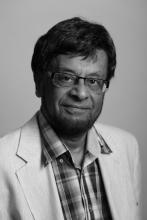
Chapter A:
ANNOUNCEMENT
„He is the true enchanter, whose spell operates, not upon the sense, but upon the imagination and the heart.“ – Washington Irvin, Stratford on Avon, The Sketchbook of Geoffrey Crayton, Gent (1819-20).
Ventriloquism is a form of light entertainment. This definition only means that the art form is presented to the public for easy appreciation or consumption in contrast to classical forms of entertainment like ballet, opera, and theater based on culture and tradition. However, the audience do realize in the case of ventriloquism aa salon in other art forms like magic, acrobatics and jugglery that the talent presented so effortlessly is indeed not a feat for anybody to emulate with ease. The definition of talent itself could be elusive. It does not stop at the very practice of the art with sufficient proficiency, dexterity, and elegance but includes also the appropriate presentation of the act causing entertainment. With this background, it is but axiomatic that even a light entertainment merits a serious consideration of all the aspects pertaining to the principles and the practice.
1. About the book
Now let me face the question “Can anyone become a vent?”. Imagine, I had given this book the title “Ventriloquism for Everyone” or “Become a Vent in 30 Days!”. It would have been a commercially viable title, but would I have been honest? Of course, anyone can become a vent. Again no one can, without serious effort based on correct knowledge and sufficient practice. I am not trying to scare away the readers right in the first chapter. But this book was not written for the reader just to give him an “Aha!” experience. It is not for Jack of all Trades out for a new adventure, dabbling in anything that sounds sensational, the kind of person who says, “Tomorrow I’ll pick up a bit of juggling or ventriloquism and will surprise them all at the next party!”. The book is meant for you, dear reader, for you are serious about this art and want to be taken seriously too. The emphasis of this book is on the honest effort to be made in order to master this art devoid of compromise and shortcuts. Either you learn it the right way or not at all! Ventriloquism is not just a trick or a feat, it is an art - it is a promise and not a compromise.
Can you then learn such an art simply by reading a book? We can look into this question by treating it more broadly: whether it is possible to acquire any art at all by reading a book. To answer this, let us first look into the possibility and limitations of conveying knowledge by
means of a book or in any written form. With such a medium you can explain a subject in a logical, systematic and orderly fashion, which might not be the case with occasional verbal hints. In a book, rules to be observed and pitfalls to be avoided can be clearly recorded. But only a part of the knowledge can be conveyed by way of a book even in the case of subjects dealing with clear cut definition and methods, e.g. in the case of exact sciences like physics and chemistry. For the test, the student has to turn to practice. Empirical knowledge can be acquired only by way of experiments. What is true for science is all the more true for an art, which is based on phantasy, imagination and practice. The performing art does not aim at the search for truth but at human phantasy and entertainment. It is headed towards the emotional world and evidently emotions cannot be reached by way of logic. They are not amenable to the cerebral method of transferring knowledge by way of a treatise on the subject.t. On the other hand, for a book the emotional world remains practically inaccessible. Equally, the instinctive part of attaining a proficiency by practice alone cannot be transcribed. For instance, a dance teacher may explain the steps to his students (cognitive plane), impress and enthuse them by his own performance (emotional plane) but it is by their own constant practice that they can absorb the knowledge (instinctive plane). A book can hardly reach the emotional plane, much less the instinctive plane. It can only stimulate the conscious resolve of the reader, encourage him to develop an ambition and plead him to practice.
I was aware of this limitation of a book right from the start. At no time could I imagine, I could make a ventriloquist of anyone by means of a book alone. Nor was it my intent. My sincere hope is that the elaborate treatment I have given this subject would introduce a newcomer to the art without any false promises or vain conclusions. This book could serve as a companion or a guide, helping you in your pursuit without waste of time and effort. I hope to help the readers who are already emotionally charged and has the will to go all the way to becoming a proficient performer. With the book serving as a help or reference, he can avoid the pitfalls and sets his feet on firm ground and in the right direction. His resolve to be recognized as a ventriloquist will be strengthened and he will be proud to be a vent one da. If I refer to a vent or the reader as “he”, I do it only for the sake of simplicity. There is absolutely no reason why a lady cannot be a ventriloquist. There is no aspect of this art which is limited to a sex. All aspects dealt here hold equally for the female sex. In fact, the vent fraternity would greet any lady among them. It is indeed to be deplored, that few ladies join us in this field in contrast to other fields like acting, music and acrobatics.
My further hope is that also my colleagues, those who are seasoned ventriloquists, will find this book interesting and at times even find some food for thought. Inevitably, they may not share all my views. (For that matter, no original artiste accepts the views of another artiste). I would be most flattered if my colleagues would find one aspect or the other to be a point worth consideration or worth a debate.
Turning to the possible objection, whether such a book would not fall into the wrong hands, i.e. whether it would seduce less serious dilettantes to abuse the art, proliferating and making it profane, I believe such a fear is unfounded. Such adepts would soon find that this is no stuff of them. Those who just want to be a center of attraction, even if they make fools of themselves, have easier means to their questionable goal than the mans of this book. They would be bored to death by the elaborate treatment and all the rules set down here. They have only time and patience for a pamphlet meant for quick reading and immediate results. What they learn that way would be no ventriloquism. This book can neither prevent nor replace such methods.
I have divided the book into six chapters. Having reserved Chapter A to deal with the subject of ventriloquism in general and to comment on this book, I have arranged the next chapters in the order of their importance from the viewpoint of a performer. Foremost is the sound mastery of the basics described in Chapter B. I recommend even seasoned vents to read it. It can help them in deepening their breath and attempting feats they thought were beyond their physique. Chapter C deals with the character of the puppet. The question of making one’s own original puppet is, of course, left to one’s imagination. I suggest the reader to consult the corresponding books and experts. Even if ventriloquism devoid of any puppet could be equally entertaining, today a puppet plays a major role in any average vent performance. Chapter D tells you how to go about building a dialogue. As I do not believe in spoon-feeding, I have treated the problem of constructing a dialogue by way of exercised and not by way of ready-made scripts to be learned by heart. To be original, the aspirant has to make his own dialogue with his own humor, words, and person effort. There is no other way. The chapter B to D give a ventriloquist the basic elements to put up an act. Chapter E goes into the aspects of presenting the vent act as an entertainment (could we call it “ventertainment”?). The vent is practically exposed on stage only here. Chapter F wraps it up by going even deeper into the interactions with the organizer and the audience, for only they can open the highroad to success. In short, Chapter A deals with the vent’s aim, B with his body, C with his companion, D with his diction, E with his environment and F with his fortitude.




Comments
Gold Writer Award
My year of birth is 1940.
The book was published on 7.11.2011
This is already a subject…
This is already a subject that feels rather tired and dated, not because ventriloquism is dead and buried but because in this day and age it's largely ignored as a source of entertainment for the masses. I'm not convinced that a book on this topic will have widespread appeal but it certainly is an interesting proposition. To be honest, this excerpt reads more like an introduction. The text could be set out to make it more reader-friendly and I think some illustrations and diagrams might help to engage the reader.
The theme is niche, yet…
The theme is niche, yet interesting. Clear passion and thoughtful structure. Revise for conciseness and grammar.
Interesting topic, one that…
Interesting topic, one that has become a bit more popular since people like Jeff Dunham and then Terry Fator & Darci Lynne on America's Got Talent. But it's a very niche market.
And maybe it's just how it was uploaded, but it feels very busy and very cramped, so it's a little hard to read.